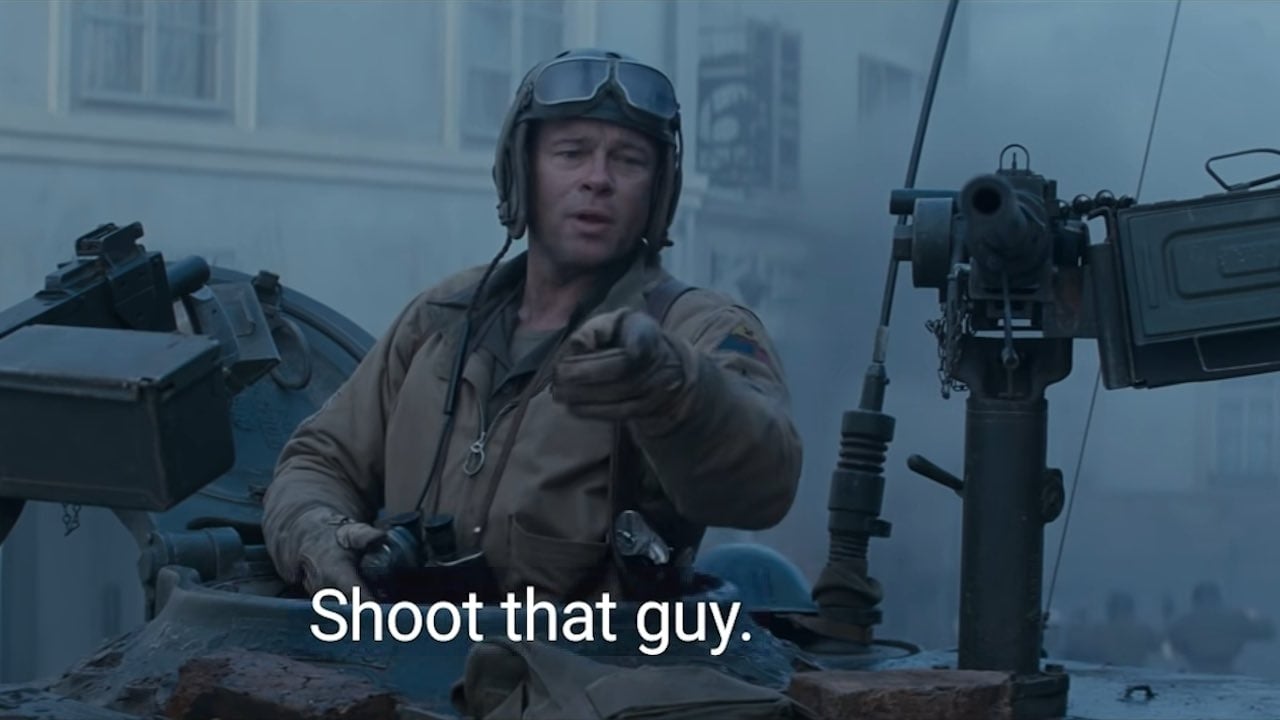I don’t really know how to structure this question, but yeah, why is always Naval and never Aviation?
spaceSHIP
“Why do they use” is a question. “Why they use” is an explanation.
I feel like especially in titles space is at a premium so omitting words that aren’t actually needed to avoid ambiguity in the given context is fine
When the missing word is do, I am unmoved by concerns about space.
Downvote all you like, I’m gonna keep correcting people who make this mistake.
I believe you mean, “Even if you, ‘down-vote,’ my comment, I shall continue to correct people who have made that mistake.”
I meant exactly what I said, and it is grammatically-correct casual English. Unlike ‘why in sci-fi they use Navy ranks?’ Or any of the hundred other ‘how to fix problem?’ examples I’ve seen, over the last decade.
This is a growing error and I am doing the bare minimum to help people stop making it. I’d understand if you find it overly prescriptivist. I’d understand if my phrasing was somehow impolite or unhelpful. But I have nothing kind to say about people mocking the effort.
Don’t you know? Correcting someone’s grammar or spelling is ableist and you have to just try to understand the fountain of garbage that people spew or you’re literally Hitler.
Because space is an ocean.
Seriously mate, you didn’t warn about the TVTropes link? Some of us need to go to bed!
I was a good two hours on that bloody site, yawning my head off but unable to look away.
You’ll sometimes see aviation terms for the little fighters that launch from the larger ships, like in macross. I think it’s a matter of scale, really. An airplane will usually have single digit crew, maybe double digit. A warship will have hundreds, and the bigger the ship the more the crew.
Because they’re way more like ships than they are planes – Planes don’t stay in the air indefinitely or take long voyages, have large crews, etc – They often treat the fighter pilot space ship people like AF though – Like if I have a ‘carrier’ with a bunch of smaller ships on it
Because people don’t live in an airplane together for long periods of time. Pilots in sci fi are often aviation themed, but captains are naval because spaceships beyond our current level are closer to battleships, cruise ships, or aircraft carriers than fighter jets or passenger liners.
I wonder if it has much to do with the USAF being a relatively new service with a proportional cultural impact, coming into being as a service in 1947. Up until then, combat aviation was subordinate to the Army and Marines. This would point to a preponderance of Army/Navy WWII vets among the show’s consultants and audience.
In the US at least, Air Force officer ranks match the Army and Marines. Sci fi tends to use those ranks for ground fighting teams.
Ship structure makes sense for a large ship. There is no similar aviation structure, the guy ultimately in charge is the aircraft is the pilot in command, generally the one flying the aircraft.
Some technical terms make more sense too. A hull is watertight, it translates well to a ship in space. A fuselage is describing the shape of the main body of an aircraft.
I’ll agree with the other posters that being on a spaceship maps better to being on a ship than it does being in an airplane, but I would add to it one other maybe overlooked factor: Robert Heinlein served in the navy and clearly had a massive hard-on for it and included all sorts of pro-war and pro-military themes in his work, and that all came from the POV of the navy and included lots of specifically naval elements to what was presented, and he was a big enough presence in the field that it left a mark that lasts to the present day.
The purpose of Air Force is to monitor the skies, project power at a distance, and provide air superiority.
The purpose of Navy is to put a floating fortress off your shore and bombard your cities, carry around materiel, men, and aircraft, and patrol a vast volume of ocean.
So Navy structures fit the mission better, and this has been true since early SF.
Removed by mod
The most crewed aircraft doesn’t even have the crew size of a British sloop!
They’re called “spaceships”
My theory is that they’re called ships cos if you switch off the engine, it’ll stop and just sit there
I have it on good authority that this does not happen with aeroplanes
Doesn’t happen with spacecraft either, despite what Hollywood often depicts. In order to ‘stop’ in space, you actually have to generate thrust. The scary thing that can happen if you lose your engine in space isn’t getting stuck in one place, it’s smashing into your destination at full speed.
The really scary thing if you lose your engine in space is that you might not smash into anything for a very very long time and die a slow death when you run out of air, water or food.
Here is an alternative Piped link(s):
oh cruel fate, to be thusly boned.
Piped is a privacy-respecting open-source alternative frontend to YouTube.
I’m open-source; check me out at GitHub.
Well, start a garden in the weapons bay and everyone better get to work on the next generation of crew then.
deleted by creator
Aviation and marine vehicles are both flying, just in different fluids.
In addition to what the others have said, in real life, international space law was based on maritime law. They even based directions on maritime law as the sailors used the stars to navigate, and that’s all you have in space to navigate with. So rockets and spacecraft call their directions the same as ships and sailing vessels, they have a port and starboard side, a bow and stern, up is zenith, down is nadir.
Fun fact the actual directions have some cool historical meanings. Nadir is the lowest point in elevation in the surrounding area, aka the bottom of the boat, and zenith is the area directly above you. So you could measure your latitude by measuring a star’s position relative to your zenith. Port was the side you docked on, because your steering oar was on your right. Starboard is a bastardization of the word stéorbord which is what the steering oar was called.
And it is important to note that the civilian aviation sector copied over civilian maritime sector.
The person in charge of the aircraft is the Captain, followed by numbers officers. This is similar to what happens in shipping. The chief flight attendant on an aircraft is the purser, which is the chief steward on a naval ship. There used to be Chief Engineer positions on some aircraft, similar to Chief Engineer positions on naval vessels.
The only reason the Air Force has its rank structure currently is because it branched off the Army.















